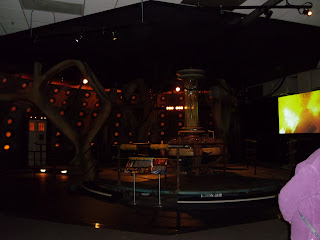Hey people :)
Hope you didn't miss me too much :) I had quite the packed summer... from going away to Corfu and Paris (bit of visual design homework = going to the louvre & Corfiot palace hehe) to setting up a new club act Diva: the Abba Experience, which I have gigs for throughout Leicester already - including new years eve...no partying for me (gasp).
 |
| The Mona Lisa - seen in Paris. |
 |
| Diva the Abba Experience - I'm on the left. So here I am at the start of year two, having survived the "first year cull". For a second I'm a bit proud but I know really it's only going to get harder. In this blog I'm going to re-review myself in all areas of the course, this time properly scrutinising how i can make things better. Visual design Last year I did quite well in visual design. I had the core skills there and pieces like my self portrait and pumping station I really am proud of. I think towards the end of the year I did lose my focus which is something I need to work on. Part of the reason for this is my anxiety and self belief issues; sometimes up at abbey park or guildhall they made me dig my heels in a bit feeling i wasn't good enough to continue. I feel in this year I will develop my skills further i.e. using colour and perfecting perspective, I am also going to try and conquer my issues with self belief/anxiety using the resources provided to me like Sarah my mentor and my new equipment (laptop, dictorphone, mapping/planning software). I need to reassure myself that I made it through to the second year, that I am good enough to be here and stop comparing myself to others - this is a hard task for me but I think ultimately it will make me feel a lot better and make my drawing improve. 3D Gradually I am improving in 3D, just looking at the pictures below you can see - |
 |
| This was the last project I completed from year 1. as you can see from the wireframe render I've improved a lot - the structure is there and matches the reference shown. The geometry is cleaner too. |
Again with my 3D I believe the one thing holding me back is my fear and anxiety. As soon as I can sort that I believe I will work better. Over the summer and now I am benefiting from a 3rd year mentor and over emails he looks at my progress. Take Tuesday for example; when we first got the 3 briefs at once that was a little too much for me to handle - although after waiting for Heather to finish I approached my dsa mentor and worked out a plan to handle how to get started without panicking. I am first completing the trash project to get it out of the way, then I will have more time to complete the two bigger tasks, also giving me a confidence boost. In our proper session on Friday we will dissect the briefs together - getting this outside help really lets me look at the bigger picture and I know I will do better having a proper plan set out with someone to tackle 3D head on.
Critical studies
I really enjoyed writing the critical studies blogs last year, although I am unsure of how I could improve them except for planning and allocating more time towards them so I can build up more on more topics.
Looking foward this year I can already detect the changes from fundamental skills to purposeful learning. On Tuesday in 3D the change was evident within the briefs given. They are more professional and allow artistic development as well as all having a deadline of December 6th. The projects seem to be much more student run already, the briefs giving technical specs and outline only, and with that common deadline we have to be more hands on with our own time management & planning. The workload has also increased in visual design and is different to the first year. While going around Abbey park instead of being given the perspective etc. we were told about colour and composition and told to get out there and create a picture. This I did quite enjoy, and knowing I needed to make my visual design better I looked and researched a different way of shading/drawing landscape online (I was drawing outlines which made me get stuck and felt difficult - now with the help of a youtube tutorial I am blocking in trees with shading within thumbnails getting the idea down better). In Critical studies you just have to look at the length of the tutorial on the vle. Instead of a few pages and links we have a paragraph - similar to visual it is trying to get you to be more independent and source own material. This I understand to be part of the 'Purposeful learning' heading onto the 3rd year where 'autonomous learning' makes us totally think for ourselves with little help from lecturers.
So, that was my blog reflecting on myself and the course for year two. my main ambition is to kick the stress and worry, therefore making me a much better student, making my work improve vastly. To do this I will be working with mentors, lecturers and my equipment: setting goals & planning efficiently to stop myself from being afraid.
I need a montage!
'Cause even Rocky had a montage :)
I need a montage!
'Cause even Rocky had a montage :)
Later,









